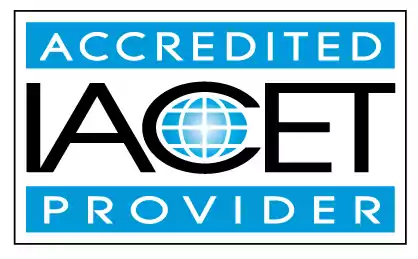Identify potential building and physical premises hazards and ways to protect from hazards.
Ensure the safety of your early childhood education or child care center by identifying and protecting against potential building and physical premises hazards. Our comprehensive approach includes identifying safety considerations for buildings, physical premises, and transportation, as well as planning for emergency response.Trainings incorporating this outcome
CDA Subject Areas
Proficiency Level
States
Alabama (1) Alaska (1) Alberta (1) Arizona (1) Arkansas (1) Australia (1) California (1) Colorado (1) Connecticut (1) Delaware (1) District of Columbia (1) Florida (1) Georgia (1) Hawaii (1) Idaho (1) Indiana (1) Iowa (1) Jamaica (1) Kansas (1) Louisiana (1) Maine (1) Maryland (1) Massachusetts (1) Michigan (1) Mississippi (1) Missouri (1) Montana (1) Nebraska (1) New Hampshire (1) New Jersey (1) New Mexico (1) New York (1) Newfoundland and Labrador (1) North Carolina (1) North Dakota (1) Nova Scotia (1) Ohio (1) Oklahoma (1) Oregon (1) Pennsylvania (1) Prince Edward Island (1) Quebec (1) Rhode Island (1) Saskatchewan (1) South Carolina (1) South Dakota (1) Texas (2) United Kingdom (1) Utah (1) Vermont (1) Virgin Islands (1) Virginia (1) Washington (1) West Virginia (1) Wisconsin (1) Wyoming (1)
24 hours courses
1 hours courses
Related Outcomes
- Identify safety considerations for building, physical premises, and transportation and plan for emergency response.
- Define Building and Physical Premises Safety.
- Identify appropriate practices for identify and demonstrate an children: Identify examples of appropriate activities for different ages
- Define Building and Physical Premises Safety
- Identify ways to handle hazards and bio-contaminants
- Identify appropriate practices for identify and demonstrate an children: Identify importance of individual planning
- Identify strategies for the child care provider that will promote successful child development. Identify strategies for working with children with special needs
- Identify regulations as it pertains to the physical plant, playground, and water safety guidelines.
- Define resilience and identify ways it helps young children overcome toxic stressors.
- Identify ways home visitors work across the child welfare continuum.
- Identify effective strategies for interviewing potential new staff.
- Identify ways to reflect on one's own personal perspectives with courage and/or humility
- Identify vehicle safety hazards that pose a major threat to children.
- Teachers will identify different ways to communicate with families
- Identify ways to meet the needs of diverse learners during training sessions.
- Teachers will demonstrate a variety of ways for families to be represented in their classrooms when they are not physically present.
- Identify ways to help parents and infants/toddlers handle separation and attachment.
- Identify ways to help parents and infants/toddlers handle separation and attachment
- Identify stages and milestones of physical and cognitive development ages 6-13.
- Identify ways to examine child behavior to prepare for guidance.
Related Articles
- Playground Safety
- How to prevent child injury using the course of 1,2,3 eyes on me
- Fulfilling Health and Safety Requirements for Child Care Providers with ChildCareEd
- Bye Bye Winter: The Role of Outdoor Play in Early Childhood Development
- Creating Safe Outdoor Play Environments for Children: Understanding Hazards and Precautions
- Creating a Safe Environment for Children in Childcare Centers
- Effective Supervision in Early Childhood Education
- The Guardian of Giggles: The Magic of Child Care Professionals, How Can You be One?
- Why Every Childcare Worker Needs This CPR & First Aid Training
- What Parents and Educators Need to Know About Child Safety
- Basic Health and Safety: The Must-Know Training for Childcare Professionals
- Emergency Preparedness Training for Childcare Providers: Keeping Kids Safe in a Crisis
- Daycare Training 101: Building a Safe, Fun, and Educational Environment
- Prevent, Protect, Respond: Child Abuse and Neglect Training for Educators
- Top Mistakes in Health and Safety Training—and How to Avoid Them
- Demystifying the Online MSDE Basic Health and Safety Course
- 👶 New to Illinois Childcare? Here Are the Mandatory Training Topics You Must Know! 📚
 2.4 CEUs
2.4 CEUs